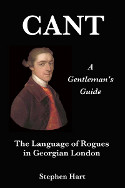THE KING'S HEAD CLUB
Another Club of this period was the "Club of Kings," or "the King Club," all the members of which were called "King." Charles himself was an honorary member.
A more important Club was "the King's Head Club," instituted for affording the Court and Government support, and to influence Protestant zeal: it was designed by the unscrupulous Shaftesbury: the members were a sort of Decembrists of their day; but they failed in their aim, and ultimately expired under the ridicule of being designated "Hogs in armour." "The gentlemen of that worthy Society," says Roger North, in his Examen, "held their evening sessions continually at the King's Head Tavern, over against the Inner Temple Gate. But upon the occasion of the signal of a green ribbon, agreed to be worn in their hats in the days of street engagements, like the coats-of-arms of valiant knights of old, whereby all warriors of the Society might be distinguished, and not mistake friends for enemies, they were called also the Green Ribbon Club. Their seat was in a sort of Carfour at Chancery-lane end, a centre of business and company most proper for such anglers of fools. The house was double balconied in the front, as may be yet seen, for the clubsters to issue forth in fresco with hats and no peruques; pipes in their mouths, merry faces, and diluted throats, for vocal encouragement of the canaglia below, at bonfires, on usual and unusual occasions. They admitted all strangers that were confidingly introduced; for it was a main end of their Institution to make proselytes, especially of the raw estated youth, newly come to town. This copious Society were to the faction in and about London a sort of executive power, and, by correspondence, all over England. The resolves of the more retired councils of the ministry of the Faction were brought in here, and orally insinuated to the company, whether it were lyes, defamations, commendations, projects, etc., and so, like water diffused, spread all over the town; whereby that which was digested at the Club over night, was, like nourishment, at every assembly, male and female, the next day:—and thus the younglings tasted of political administration, and took themselves for notable counsellors."
North regarded the Green Ribbon Club as the focus of disaffection and sedition, but his mere opinions are not to be depended on. Walpole calls him "the voluminous squabbler in behalf of the most unjustifiable excesses of Charles the Second's Administration." Nevertheless, his relation of facts is very curious, and there is no reason to discredit his account of those popular "routs," to use his own phrase, to which he was an eyewitness.
The conversation and ordinary discourse of the Club, he informs us, "was chiefly upon the subject of Braveur, in defending the cause of Liberty and Property; what every true Protestant and Englishman ought to venture to do, rather than be overpowered with Popery and Slavery." They were provided with silk armour for defence, "against the time that Protestants were to be massacred," and, in order "to be assailants upon fair occasion," they had recommended to them, "a certain pocket weapon which, for its design and efficacy, had the honour to be called a Protestant Flail. The handles resembled a farrier's blood-stick, and the fall was joined to the end by a strong nervous ligature, that, in its swing, fell just short of the hand, and was made of Lignum Vitæ, or rather, as the Poets termed it, Mortis." This engine was "for street and crowd-work, and lurking perdue in a coat-pocket, might readily sally out to execution; and so, by clearing a great Hall or Piazza, or so, carry an Election by choice of Polling, called knocking down!" The armour of the hogs is further described as "silken back, breast, and potts, that were pretended to be pistol-proof, in which any man dressed up was as safe as in a house, for it was impossible any one would go to strike him for laughing, so ridiculous was the figure, as they say, of hogs in armour."
In describing the Pope-burning procession of the 17th of November, 1680, Roger North says, that "the Rabble first changed their title, and were called the Mob in the assemblies of this Club. It was their Beast of Burthen, and called first, mobile vulgus, but fell naturally into the contraction of one syllable, and ever since is become proper English."
We shall not describe these Processions: the grand object was the burning of figures, prepared for the occasion, and brought by the Mob in procession, from the further end of London with "staffiers and link-boys, sounding," and "coming up near to the Club-Quality in the balconies, against which was provided a huge bonfire;" "and then, after numerous platoons and volleys of squibs discharged, these Bamboches were, with redoubled noise, committed to the flames." These outrageous celebrations were suppressed in 1683.
John Timbs
Club Life of London Vol. I
London, 1866

